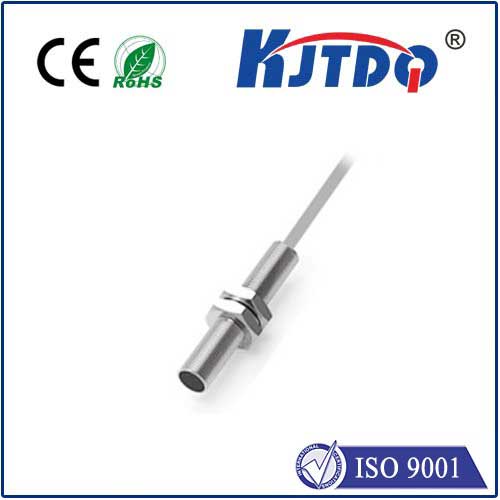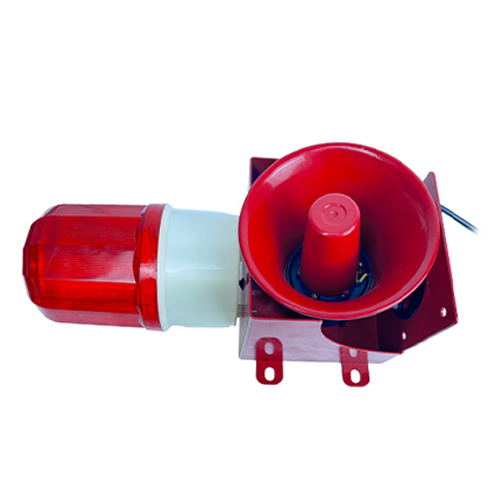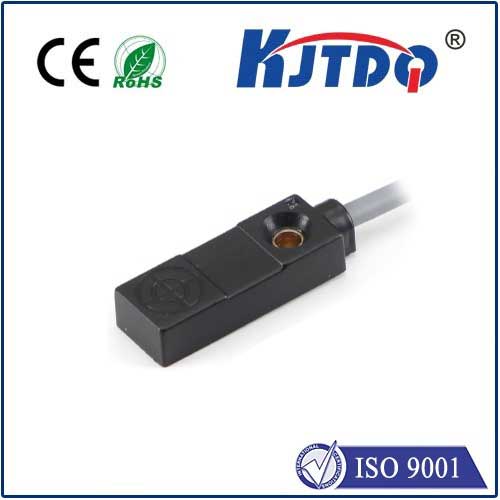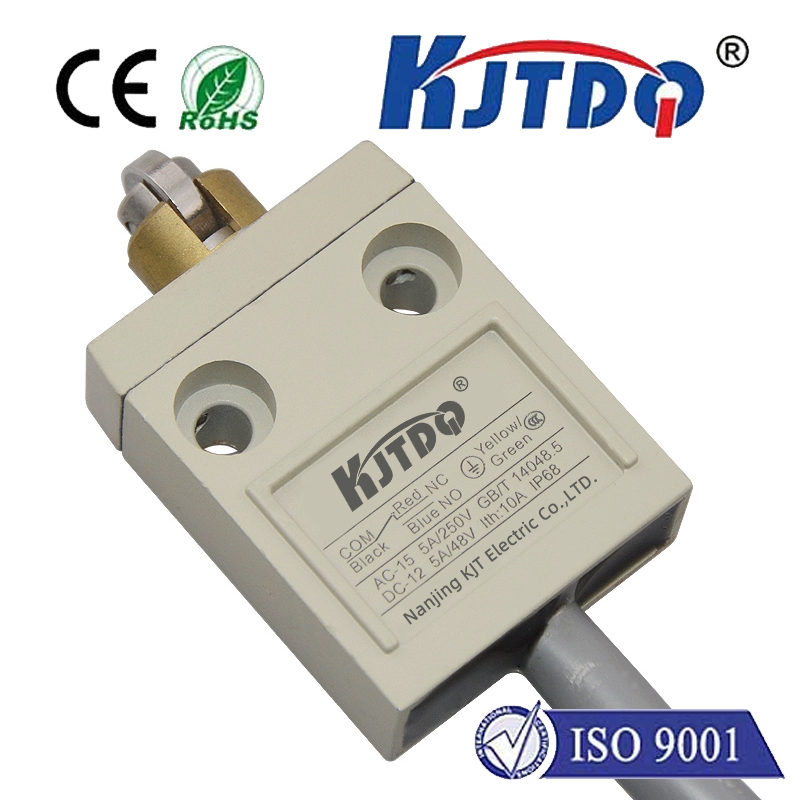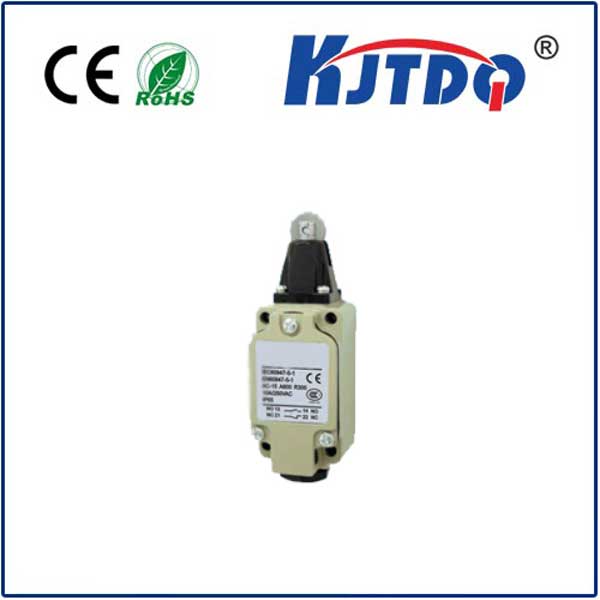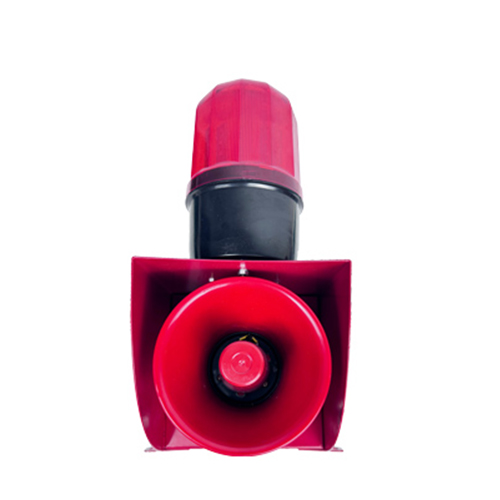E2E-X5ME1-Z 2M*1 proximity sensor
- time:2025-09-22 12:02:59
- Click:0
The Omron E2E-X5ME1-Z 2M: Precision Proximity Sensing Made Reliable
(Title Generated Based on Understanding: Omron E2E-X5ME1-Z 2M Proximity Sensor: Uncompromising Detection in Demanding Environments)
In the intricate dance of modern automation, where milliseconds matter and reliability is non-negotiable, the seemingly humble proximity sensor plays a starring role. These silent sentinels detect presence or absence without physical contact, triggering critical actions and safeguarding processes. When the demand is for unwavering accuracy in challenging conditions, especially involving metallic targets, the Omron E2E-X5ME1-Z 2M inductive proximity sensor emerges as a proven solution. This specific model, with its integrated 2-meter cable, represents a blend of robust design, dependable performance, and practical installation convenience.
Understanding the Core: Inductive Proximity Sensing
At the heart of the E2E-X5ME1-Z lies inductive sensing technology. This principle relies on generating a high-frequency oscillating electromagnetic field from the sensor’s face. When a ferrous or non-ferrous metal target enters this field, it induces eddy currents within the metal. These currents absorb energy from the sensor’s oscillating circuit, causing a detectable change in its amplitude or frequency. The sensor’s internal electronics detect this shift and trigger its output signal, indicating the target’s presence. This contactless method offers significant advantages over mechanical switches: no moving parts to wear out, immunity to contamination (dust, oil, coolant), high-speed response times, and exceptional durability.
Decoding the E2E-X5ME1-Z 2M*1

Omron’s model naming convention provides vital information about the sensor’s specifications:
- E2E: Identifies this as part of Omron’s extensive family of cylindrical inductive proximity sensors.
- X: Indicates a DC 3-wire configuration, the most common type offering both sourcing (PNP) and sinking (NPN) output options depending on the specific wiring and suffix.
- 5: Specifies the sensor’s sensing distance. An E2E-X5ME1-Z offers a 5mm standard sensing distance (Sn). Crucially, this is the rated operating distance, ensuring reliable detection at this range under defined conditions, often with a slight safety margin.
- M: Denotes the housing material. Here, ’M’ stands for metal housing (brass, nickel plated), providing superior robustness, resistance to physical stress, and excellent heat dissipation compared to plastic-bodied sensors. This makes it ideal for harsh industrial environments.
- E1: Represents the specific electrical characteristics and output details. For the E1 variant, this typically means:
- DC 3-wire (as noted by ‘X’).
- Normally Open (NO) output configuration. The output switches ON when a target is detected within the sensing range.
- Specific operating voltage range (commonly 10-30V DC).
- Specific output current rating (e.g., 200mA).
- Z: Signifies a pre-wired cable connection. This eliminates the need for separate connectors.
- 2M*1: Clearly specifies the cable length: a single (1), 2-meter long cable. This integrated cable simplifies installation and avoids the potential point of failure at a connector junction. The 2-meter length offers significant flexibility for routing within machinery or equipment.
The Significance of Metal Housing and 5mm Sensing Range
The metal housing (M) is not merely cosmetic. It delivers tangible benefits:
- Enhanced Durability: Excellent resistance to impacts, crushing forces, and vibration compared to plastic.
- Superior Environmental Protection: Often achieves higher IP (Ingress Protection) ratings (e.g., IP67), offering reliable operation under exposure to dust, water jets, or temporary immersion and common coolants.
- Thermal Stability: Better withstands higher ambient temperatures common near motors, hydraulics, or foundries.
- Shielding: Provides inherent electromagnetic compatibility (EMC), reducing susceptibility to interference from nearby motors or drives.
The 5mm (X5) sensing distance strikes an optimal balance. It provides sufficient range for practical detection needs – allowing for reasonable mounting tolerances and target position variations – while still maintaining high precision and resistance to mis-triggering from background metals or adjacent machinery. This range is particularly effective for detecting components like metal plates, tools, cylinders, or machine parts in automated assembly, packaging, material handling, and CNC machinery.
Key Features and Benefits Summarized
- Inductive Sensing Principle: Contactless, wear-free detection of metallic objects.
- DC 3-Wire (X): Flexible sourcing (PNP) or sinking (NPN) output compatibility.
- 5mm Standard Sensing Distance (X5): Reliable detection range for most industrial metal detection tasks.
- Metal Housing (M): Unmatched durability, high IP rating (e.g., IP67), and excellent thermal/EMC performance.
- Normally Open Output (E1): Output activates when target is present.
- 2m Pre-wired Cable (2M*1 & Z): Simplifies installation, reduces failure points, and offers routing flexibility. No separate connector required.
- High Switching Frequency: Capable of detecting rapidly moving targets.
- Short-circuit & Reverse Polarity Protection: Built-in safeguards enhance reliability and longevity.
Typical Application Scenarios for the E2E-X5ME1-Z 2M
The combination of robustness, reliable 5mm sensing, and integrated cable makes this sensor indispensable across numerous sectors:
- Machine Tooling: Position verification of tool holders, turret indexing, chuck clamping confirmation, workpiece presence/absence detection on pallets or fixtures.
- Automated Assembly: Detecting parts on feeders, verifying component insertion, confirming actuator end positions (cylinders), checking robot gripper contents.
- Packaging Machinery: Monitoring fill levels of metal containers, detecting foil seals, verifying case/tray presence, control of capping or sealing mechanisms.
- Material Handling: Monitoring conveyor lines for metal objects, detecting pallet positions, confirming lift or transfer mechanism status, safety guarding (non-personnel, position interlocking).
- Automotive Manufacturing: Verifying component placement on engines/transmissions, detecting metal parts on welding jigs, monitoring robotic weld gun positions.
- Process Control: Liquid level detection in metal tanks (float with trigger), valve position feedback (metal stem/flags), detecting metal components in sorting systems.
Installation and Mounting Considerations
Proper installation maximizes performance and lifespan:
- Mounting: Utilize the M18 cylindrical thread for secure mounting. Ensure the sensing face is flush or slightly recessed within its mounting bracket if used to protect it from direct impacts. Respect the specified mounting distance relative to surrounding metal.
- Wiring: Follow the wiring diagram specific to the sensor’s output type (PNP or NPN, normally open) and your controller’s input requirements. The standard cable colors are typically:
- Brown: +V (Power Supply Positive)
- Blue: 0V (Power Supply Negative / Common)
- Black: Output Signal
- Always refer to the official Omron datasheet for the exact E2E-X5ME1-Z configuration.
- Sensing Range: Remember the standard sensing distance (Sn) is 5mm for the defined target (usually mild steel). Detection distances for different metals (stainless steel, aluminum, brass) will vary (typically less). Factor in mounting












